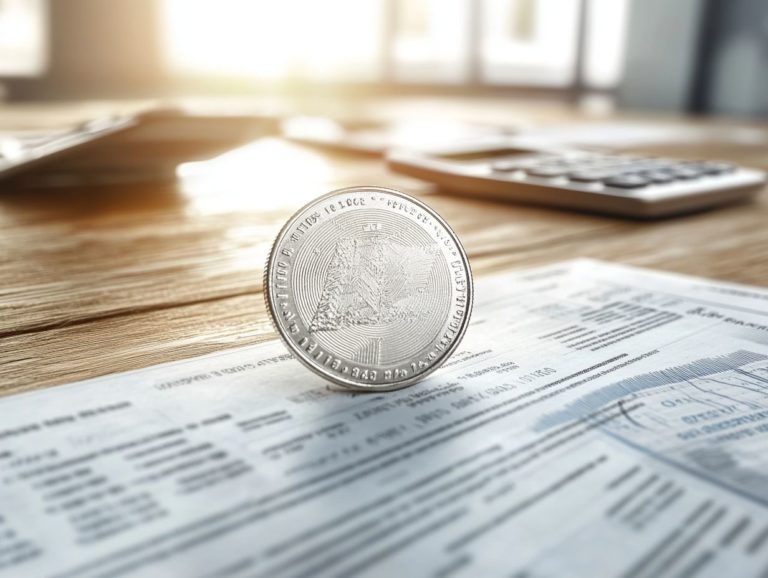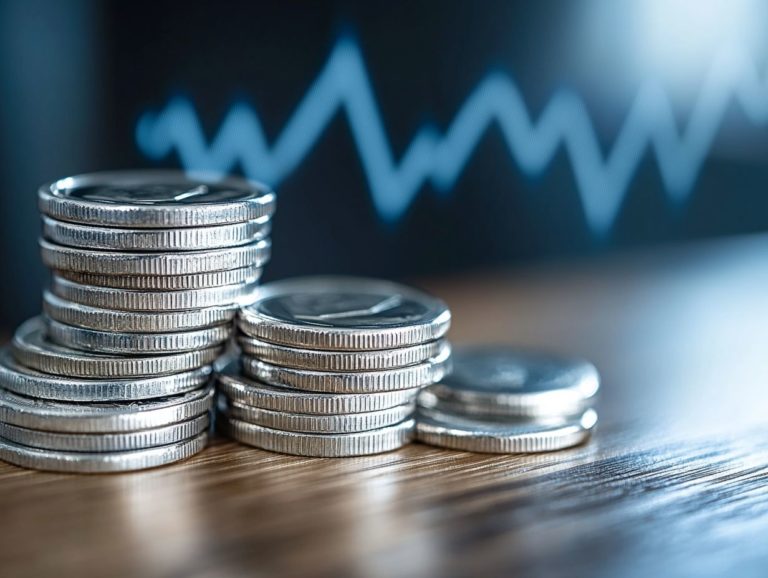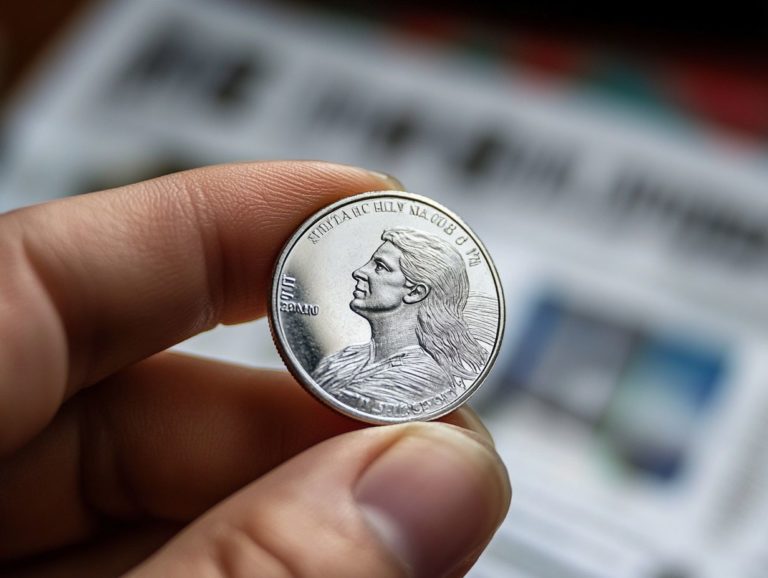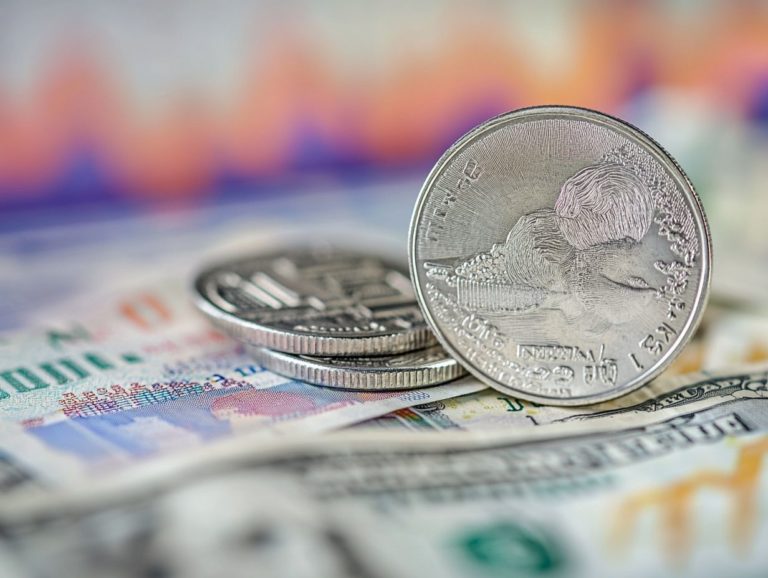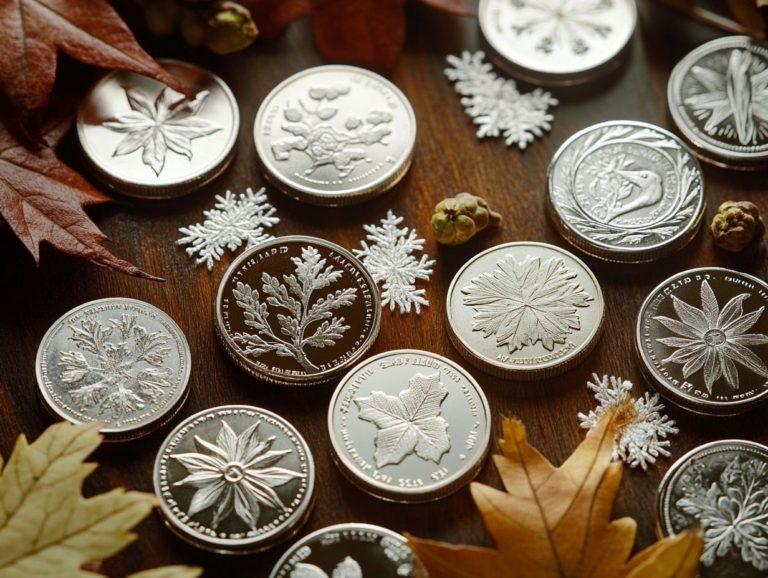Silver vs. Gold: Which is the Better Investment?
When you think about investing, silver and gold likely come to mind as key players in the conversation. Both possess a rich history and distinct characteristics that can significantly impact their market value.
Get ready to explore the historical performance of these precious metals! We ll compare their price trends and examine the myriad factors both economic and political that influence their prices.
We’ll also consider the pros and cons of investing in each, assisting you in determining which might be the most advantageous addition to your portfolio.
Whether you re a seasoned investor or just beginning your journey, grasping these elements can enhance your decision-making process, ensuring your investments are strategically aligned with your goals.
Contents
- Key Takeaways:
- Historical Performance of Silver and Gold
- Factors Affecting the Price of Silver and Gold
- Pros and Cons of Investing in Silver
- Pros and Cons of Investing in Gold
- Which is the Better Investment?
- Frequently Asked Questions
- What is the difference between investing in silver and investing in gold?
- Which is more valuable, silver or gold?
- Is silver or gold a safer investment?
- What are some practical uses for silver and gold?
- Is it better to invest in silver or gold during times of economic uncertainty?
- Which metal should I invest in for long-term growth?
Key Takeaways:
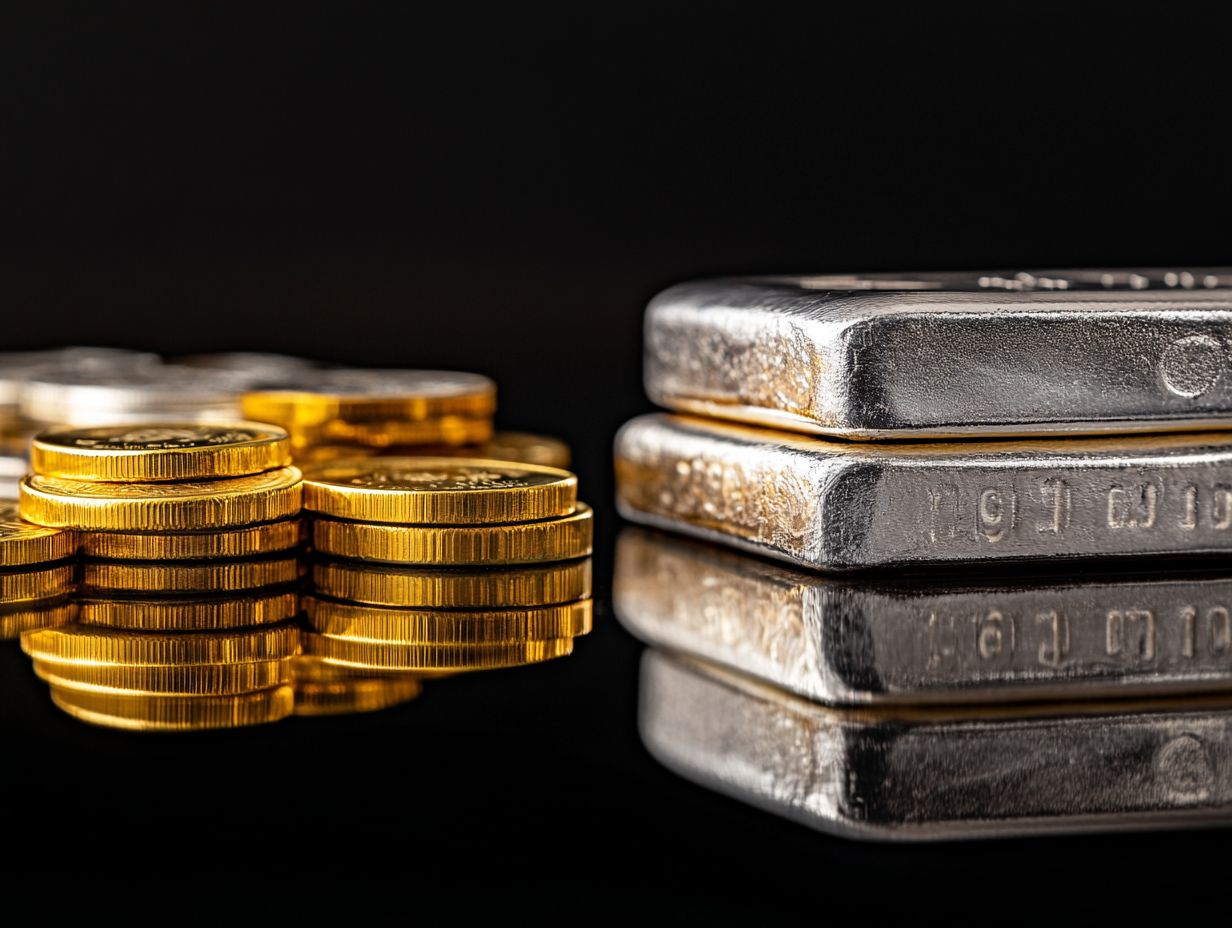
- Silver and gold have been used as investments for centuries.
- Historically, gold has shown a more stable and consistent increase in value compared to silver.
- When considering investing in either metal, it’s important to factor in economic and political influences, as well as the pros and cons of each metal.
What are Silver and Gold?
Gold and silver are more than just shiny metals; they re your allies in the world of investment. Steeped in history and recognized for their value, these precious metals have been coveted not only for their allure but also for their protection against rising prices. This makes them essential elements in a well-rounded investment portfolio, particularly for those looking to preserve wealth during turbulent economic times.
Grasping the intricacies of these investments can significantly enhance your financial decision-making, especially as you navigate the complexities of today s market.
Throughout various cultures, both metals have served as currency, adorned jewelry, and held sacred meanings, solidifying their significance in human history. The surging interest in investing in physical gold or silver bars highlights their charm as tangible assets, especially when the market gets shaky.
Things like mining output, geopolitical tensions, and currency shifts can greatly affect their market value. Many investors often seek out gold and silver not just for speculative gains, but also as a protective cushion to bolster overall portfolio stability.
As the global economy shifts and adapts, these precious metals will continue to attract those in pursuit of reliable and historically sound investment options.
Historical Performance of Silver and Gold
The historical performance of gold and silver unveils significant trends that have shaped the investment landscape, particularly regarding their prices, returns, and volatility over time. These precious metals often serve as safe havens during economic instability, with their value typically rising in relation to the performance of stock markets, such as the Standard & Poor s 500 Index.
Grasp these dynamics to position your portfolio better as you navigate the complexities of investing.
Comparison of Price Trends
When you compare the price trends of gold and silver, it s clear that these metals respond differently to market forces. Gold tends to show more stability, while silver can be a bit of a wild card. Analyzing these trends closely is essential if you want to make informed decisions about incorporating these assets into your portfolio.
Throughout history, gold and silver have danced to different tunes in response to economic events, geopolitical tensions, and shifts in investor sentiment. For instance, during periods of economic uncertainty or inflation, gold often steps up as a safe haven, maintaining its value thanks to its limited supply and strong investment appeal. Understanding the differences between physical vs. paper silver can also inform your investment decisions in these precious metals.
On the flip side, silver’s price can fluctuate more dramatically due to its dual role as both an investment and an industrial metal. Its demand is tightly linked to various sectors, like electronics and solar energy. Understanding the relationship between silver prices and economic cycles is crucial, as industrial demand can cause silver to rise or plummet, mirroring broader economic conditions. For insights into how silver fits into the larger picture of the future of investing: physical vs. paper, it’s important to stay informed.
By analyzing historical charts, you can uncover these dynamics, helping you to grasp how each metal might perform across a range of scenarios.
Factors Affecting the Price of Silver and Gold
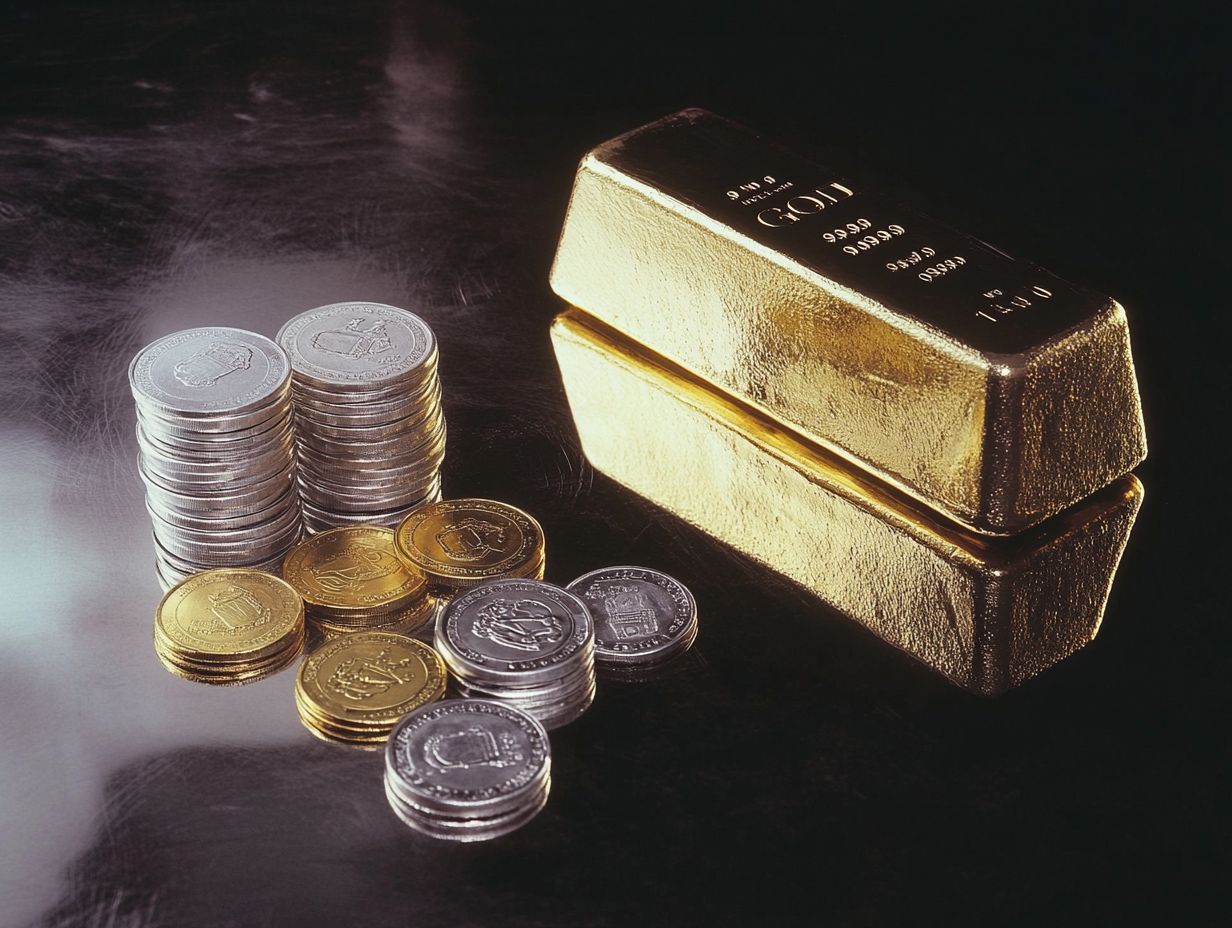
The prices of silver and gold are influenced by various factors. These include economic conditions and significant political events globally.
As an investor, it’s crucial to pay attention to elements like inflation, interest rates, and geopolitical uncertainties. These factors can sway the market movements of these precious metals.
Grasping how economic trends and political influences interact is key to successful investing. It can help you make smarter choices.
Economic and Political Influences
Economic downturns and political factors significantly impact the market prices of gold and silver. Often, individuals and institutions turn to these precious metals as a safe haven.
When a recession hits, consumer confidence typically wanes, and unemployment rates tend to rise. This environment encourages a shift toward gold and silver as reliable assets.
Political events, like elections, introduce uncertainty. International conflicts can heighten this uncertainty, leading to increased demand for precious metals.
Your choices can significantly impact the volatile prices of gold and silver. Act wisely!
Pros and Cons of Investing in Silver
Investing in silver presents a range of advantages and disadvantages. It’s essential to consider these factors thoughtfully before making financial commitments.
On one hand, silver can deliver impressive returns and enhance portfolio diversification during periods of economic uncertainty. However, its price volatility can introduce notable risks.
Advantages and Disadvantages
Investing in silver offers compelling advantages, including potential for high returns, diverse industrial applications, and lower entry costs compared to gold. You must weigh these benefits against drawbacks like greater price volatility and market fluctuations.
Silver’s unique properties make it essential in various industries, from electronics to renewable energy. This drives demand and may enhance its market value over time. Often viewed as a safe haven during economic uncertainty, silver attracts both seasoned and novice investors, much like gold bullion vs. gold stocks insights that help investors navigate their choices.
Yet, the lure of quick profits can tempt you into speculative trading, where impulsive decisions might lead to significant losses. Prices are susceptible to sudden shifts influenced by global economic conditions. Your journey in silver investment requires careful analysis and a measured approach.
Pros and Cons of Investing in Gold
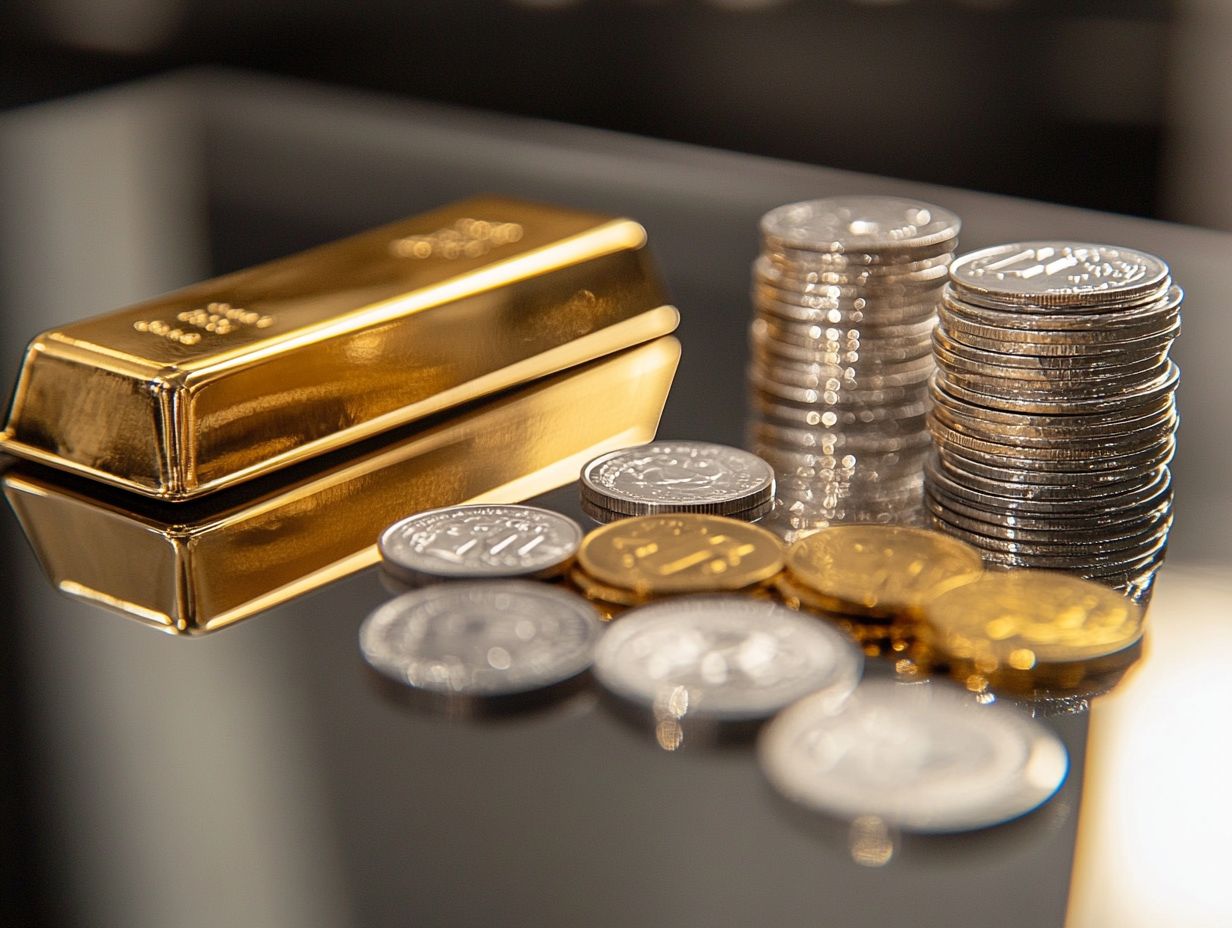
Gold, a revered investment vehicle throughout history, offers a unique blend of advantages and disadvantages. It’s important to assess these factors when shaping your financial strategy.
Gold is known for its ability to hedge against inflation and provide stability during economic turbulence. It acts as a dependable investment and a sanctuary for your assets.
However, you should also acknowledge the downsides, like high market prices and comparatively lower industrial demand relative to silver. Balancing these factors will help you navigate the complexities of investing in gold.
Advantages and Disadvantages
Investing in gold offers several compelling advantages, including its reputation as a safe haven during economic uncertainty. It also provides protection from inflation and has the potential for capital preservation.
Be aware of the disadvantages, such as high entry costs and limited growth potential in a bullish market.
Historically, gold has represented wealth and security, often maintaining its value when other assets stumble. Many investors look to it as a way to diversify their portfolios, particularly in times of turbulence. To explore the options available, consider the differences in gold ETFs vs physical gold.
While gold can be a solid choice for those seeking stability, you must dive into the details to avoid pitfalls. You may face potential liquidity issues when converting gold into cash, along with ongoing costs associated with its storage and protection.
These factors underscore that although gold investment has its merits, a comprehensive understanding of both its benefits and limitations is vital for making informed financial decisions.
Which is the Better Investment?
Determining whether gold or silver is the superior investment demands a thoughtful examination of several key factors. Consider current market conditions, your unique investment goals, and your personal risk tolerance.
Each precious metal possesses distinct characteristics that cater to different investor profiles. It’s crucial for you to evaluate the potential for returns, the degree of volatility, and the opportunities for diversification. Additionally, understanding how to choose between silver coins and bars can further enhance your investment strategy.
Considerations and Recommendations
When considering investments in gold or silver, approach your financial decisions with care. Thoughtfully weigh factors such as market performance, economic conditions, and your personal risk profile.
Tailoring your investment strategies to align with your individual goals can significantly enhance the role these precious metals play in your portfolio. Striking a balanced allocation between gold and silver can offer you diversification, allowing you to take advantage of the unique benefits each metal provides.
For example, while gold often acts as a hedge against inflation, silver can flourish alongside industrial demand.
Before you venture into the market, you must evaluate current prices and trends, ensuring that your timing aligns with your investment strategy. Collaborating closely with a financial advisor can yield insights tailored to your specific circumstances, helping you grasp how these assets integrate into your broader financial plan.
This partnership not only gives you the power to make informed choices but also ensures that your decisions are in harmony with your long-term financial objectives.
Frequently Asked Questions
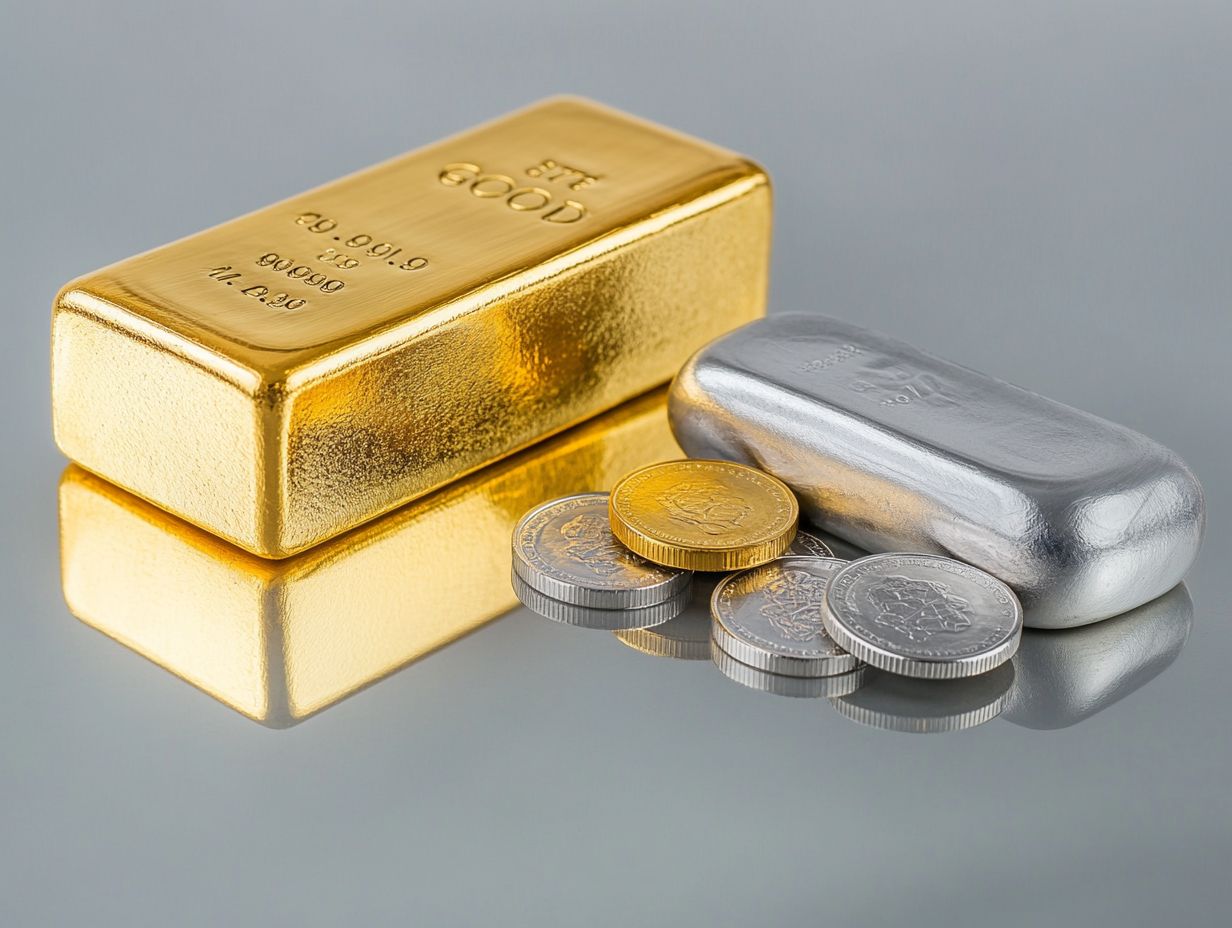
What is the difference between investing in silver and investing in gold?
Silver and gold are both precious metals commonly used for investment purposes. However, there are several differences between the two, including their value, availability, and practical uses.
Which is more valuable, silver or gold?
Gold is generally considered more valuable than silver. This is due to its rarity, as gold is much less abundant and more difficult to mine than silver.
Is silver or gold a safer investment?
Both silver and gold are considered safe investments, but gold is often viewed as a more stable and secure option. This is because gold is a less volatile commodity and tends to hold its value more consistently over time.
What are some practical uses for silver and gold?
Silver is commonly used in the manufacturing of electronics, jewelry, and silverware, while gold is primarily used in jewelry, technology, and as a store of value.
Is it better to invest in silver or gold during times of economic uncertainty?
Many investors turn to gold during times of economic uncertainty, as it is seen as a hedge against inflation and market fluctuations. However, silver can also be a good investment during these times, as it is often undervalued and has strong industrial demand.
Start your investment journey today with the knowledge you ve gained!
Which metal should I invest in for long-term growth?
Both silver and gold have a history of long-term growth!
Gold typically increases in value more than silver. Choose wisely! Your best investment depends on your financial goals and how much risk you can handle. Start planning your investment strategy today!










